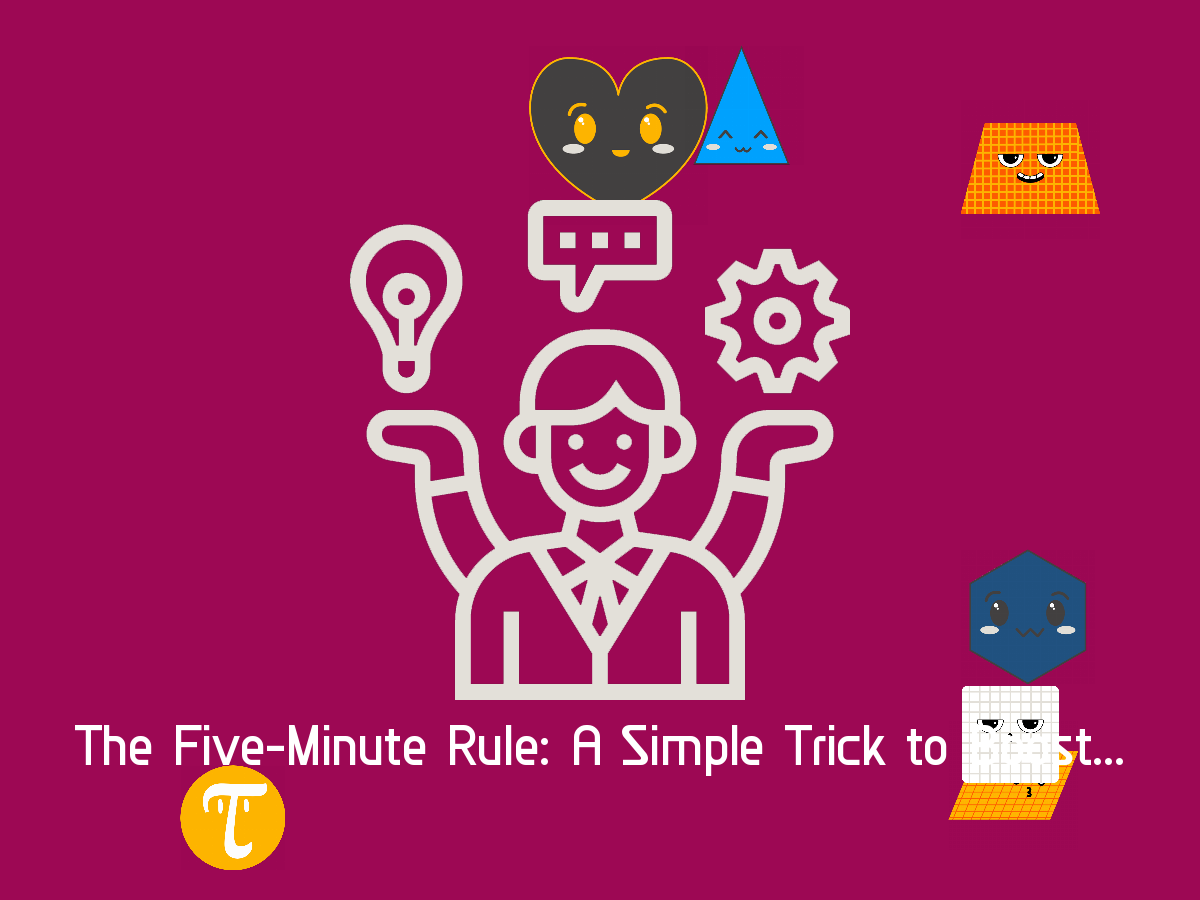Procrastination and task avoidance are common challenges in the workplace. Sometimes, the hardest part of any task is simply getting started. Enter the Five-Minute Rule – a simple, yet effective technique to kickstart productivity and overcome the inertia of procrastination. Let’s dive into what this rule is and how you can apply it to your work life.
1. What is the Five-Minute Rule?
- The Five-Minute Rule states that you commit to working on a task for just five minutes. After five minutes, you give yourself the choice to continue or stop.
2. Why It Works
- Overcomes Initial Resistance: Starting is often the hardest part. Committing to just five minutes feels manageable and less daunting.
- Builds Momentum: Once you begin, you’re likely to continue beyond the initial five minutes, as getting started is often the biggest hurdle.
- Reduces Overwhelm: It breaks down larger, more intimidating tasks into smaller, more manageable pieces.
3. Applying the Rule in Your Workday
- Start with the Most Challenging Task: Tackle your most daunting task first with the Five-Minute Rule. It’s a great way to make progress on projects you’ve been avoiding.
- Use it for Small Tasks Too: Even for less intimidating tasks, committing to a short, focused burst can increase efficiency.
4. Combining with Other Techniques
- Pair the Five-Minute Rule with other productivity methods. For example, use it alongside the Pomodoro Technique for longer tasks, breaking work into intervals with short breaks.
5. Making it a Habit
- Consistency is key. Make the Five-Minute Rule a part of your daily routine to see long-term changes in your productivity patterns.
6. Adapting the Rule for Different Tasks
- The rule is flexible. For some tasks, you might extend it to ten or fifteen minutes. The core principle remains the same – just get started.
7. Tracking Your Progress
- Keep a log of tasks where you applied the Five-Minute Rule. This will help you see the cumulative effect of those minutes in tackling big projects.
8. Conclusion
The Five-Minute Rule is a powerful tool in your productivity arsenal. It’s simple, requires no special tools, and can be remarkably effective. By committing to just five minutes, you’ll often find that you’ve kickstarted a productive work session, turning dread into progress, one small step at a time.





